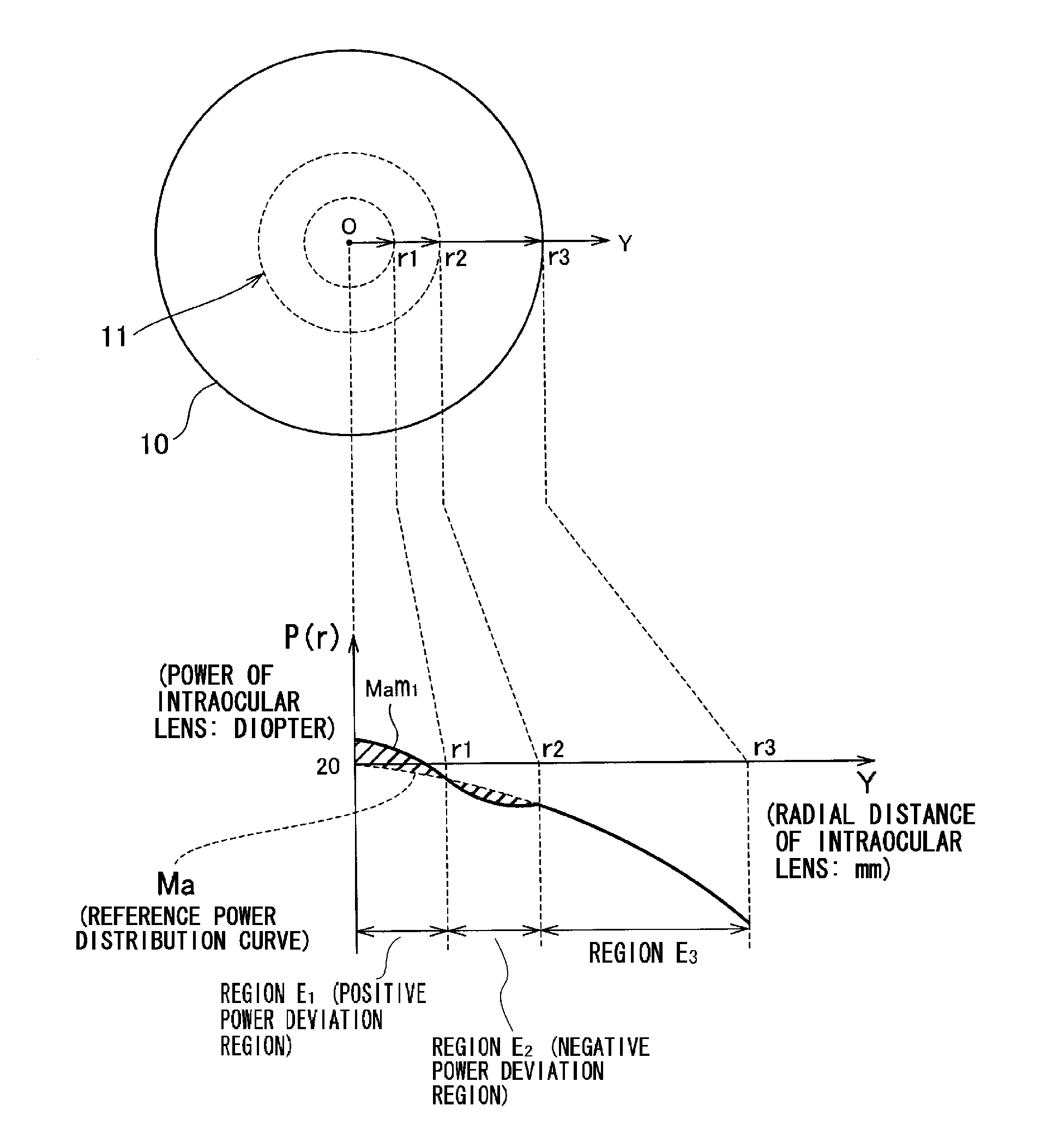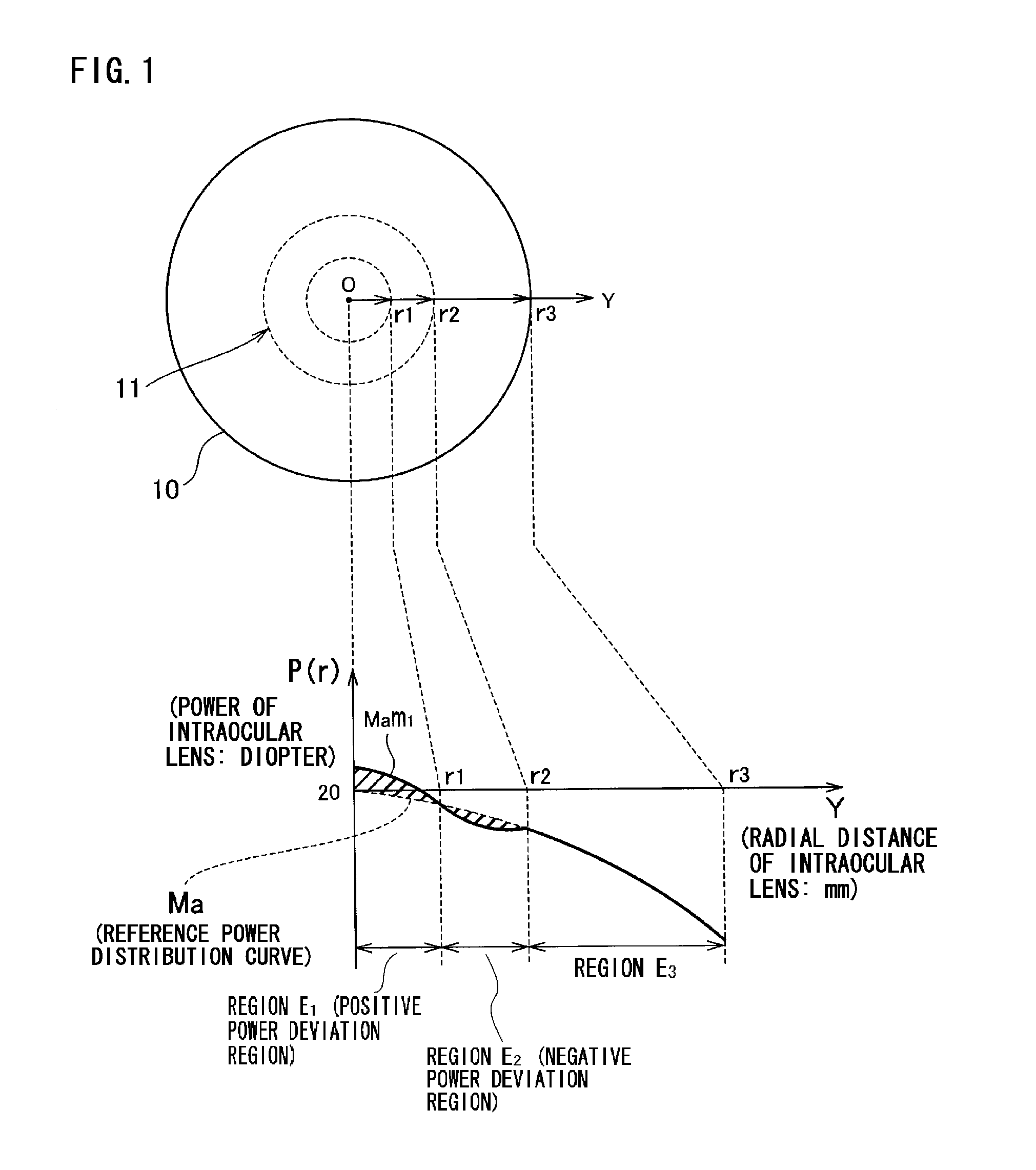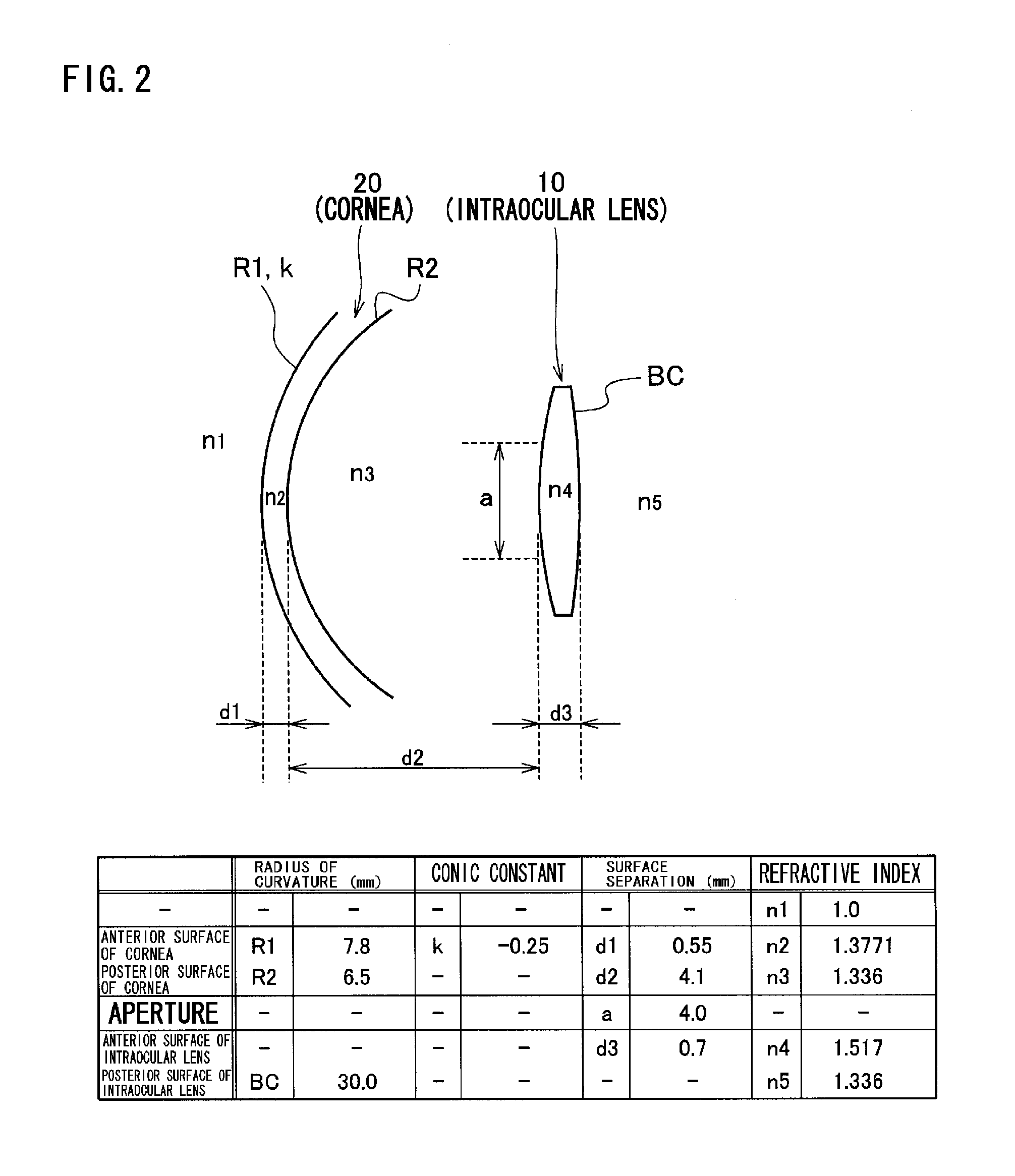Intraocular lens
a technology of intraocular lens and lens body, applied in the field of intraocular lens, can solve the problems of deteriorating contrast of such lens, reducing the visible range of the object, so as to and suppress deterioration in contrast
- Summary
- Abstract
- Description
- Claims
- Application Information
AI Technical Summary
Benefits of technology
Problems solved by technology
Method used
Image
Examples
embodiment 1
[0028]As shown in FIG. 1, with respect to the reference power distribution curve Ma, the power distribution of the intraocular lens 10 according to this embodiment is such that: a power is larger than that represented by the reference power distribution in the region E1 inside the region 11 in the vicinity of the center of the intraocular lens 20, and the region E1 serves as the positive power deviation region; and a power is smaller than that represented by the reference power distribution the in region E2 inside the region 11 in the vicinity of the center of the intraocular lens 20, and the region E2 serves as the negative power deviation region. The following equation is obtained by polynomial approximation of the power distribution of the intraocular lens according to the
P(r)=a0+a1r2+a2r4+ . . . +an-1r2(n-1)+anr2n Eq. 1
[0029]n=8
[0030]
iai020.312969771−1.4587525920.7612070330.032913694−0.1520333350.052604246−0.0081295670.000606758−0.00001778
[0031]As shown in FIG. 3, the power dis...
embodiment 2
[0040]FIG. 11 is a graph showing the power distribution Mbm1 of the intraocular lens the power distribution of the spherical intraocular lens, and the reference power distribution Mb. Herein, the reference power distribution curve Mb employs the power distribution in which the powers are the same as those of the spherical intraocular lens in the vicinity of the optical axis, and as to cancel the spherical aberration of the cornea, the powers are decreased with distance closer to the outer periphery. That is, the reference power distribution curve Mb does not employ the power distribution which cancels the spherical aberration of the cornea in the vicinity of the optical axis. In addition, although the reference power distribution curve Mb employs the power distribution so as to cancel the spherical aberration of the cornea in other regions, the power distribution does not perfectly cancel the spherical aberration of the cornea, unlike the reference power distribution Ma.
[0041]FIG. ...
PUM
 Login to View More
Login to View More Abstract
Description
Claims
Application Information
 Login to View More
Login to View More - R&D
- Intellectual Property
- Life Sciences
- Materials
- Tech Scout
- Unparalleled Data Quality
- Higher Quality Content
- 60% Fewer Hallucinations
Browse by: Latest US Patents, China's latest patents, Technical Efficacy Thesaurus, Application Domain, Technology Topic, Popular Technical Reports.
© 2025 PatSnap. All rights reserved.Legal|Privacy policy|Modern Slavery Act Transparency Statement|Sitemap|About US| Contact US: help@patsnap.com



